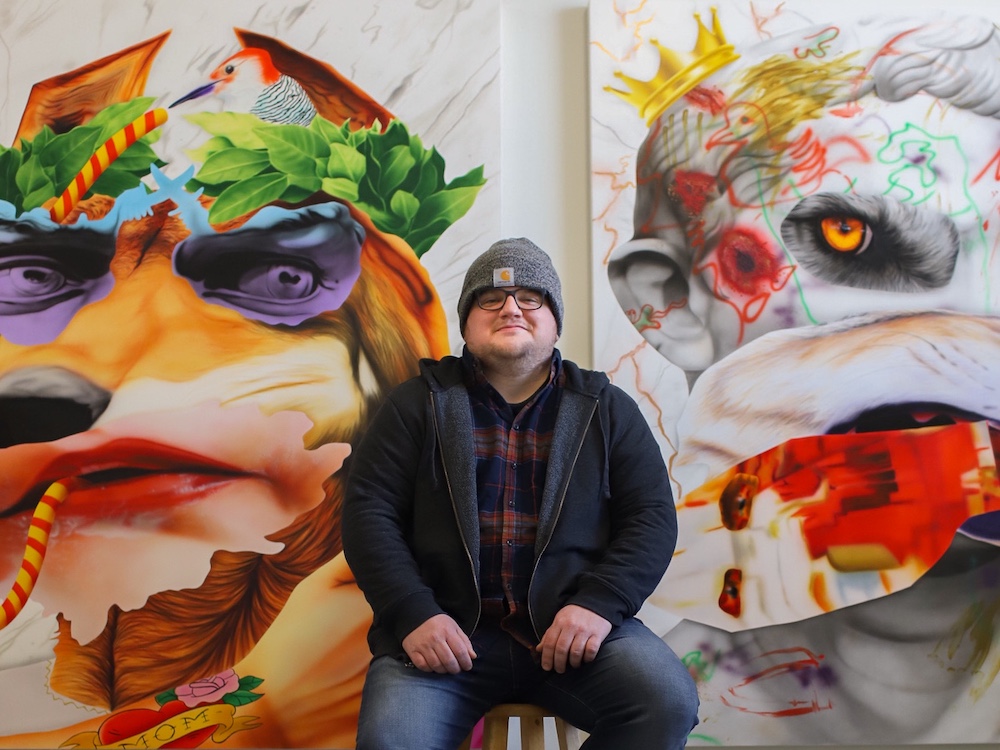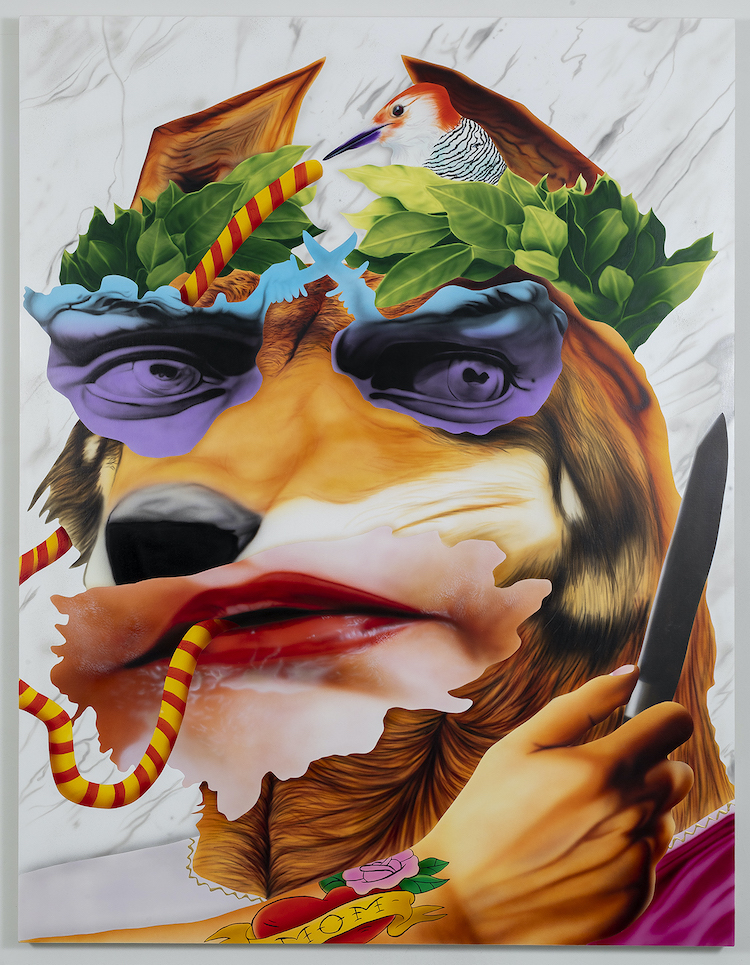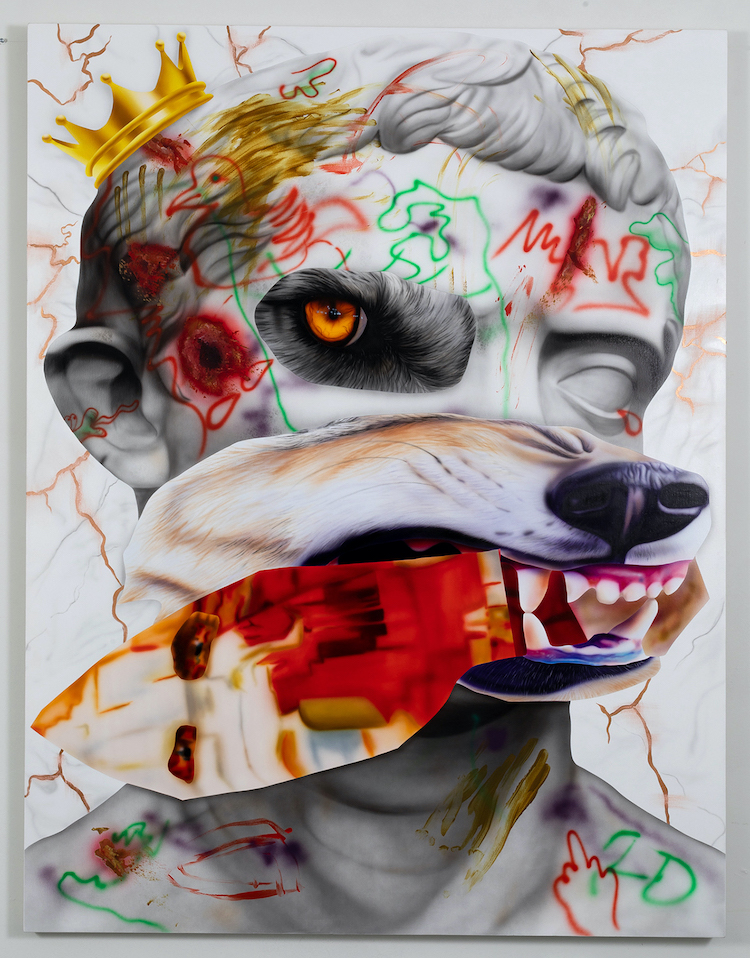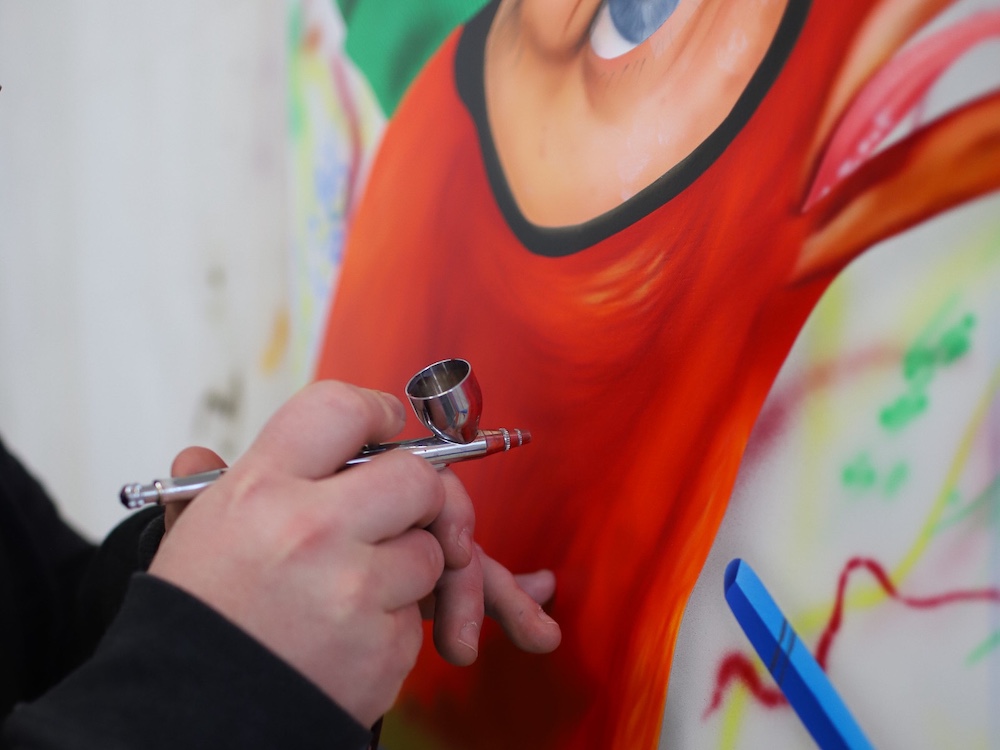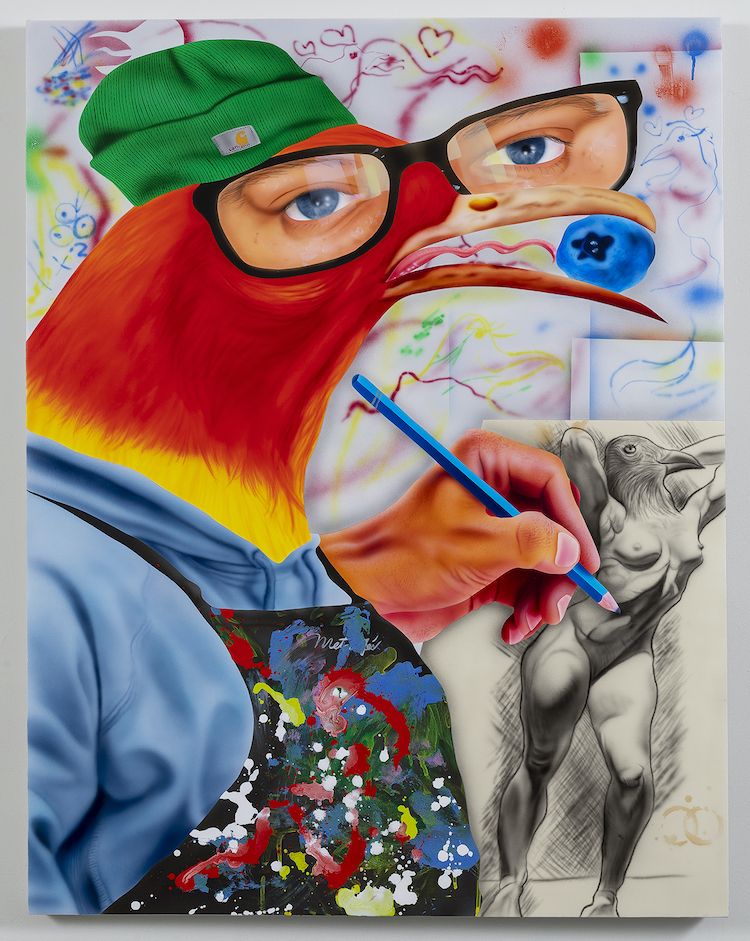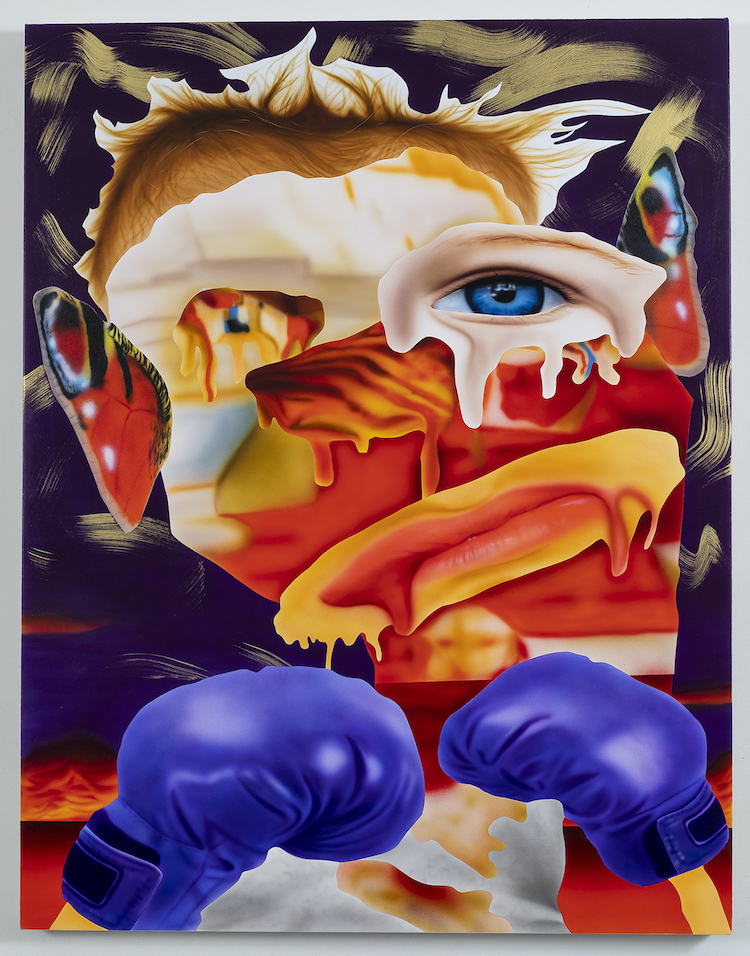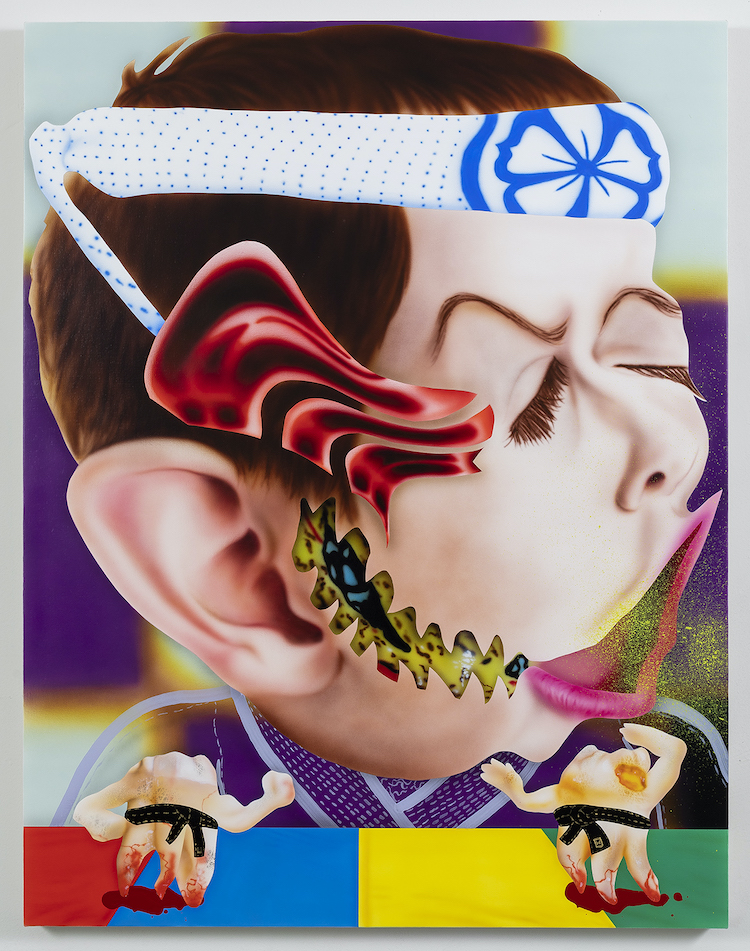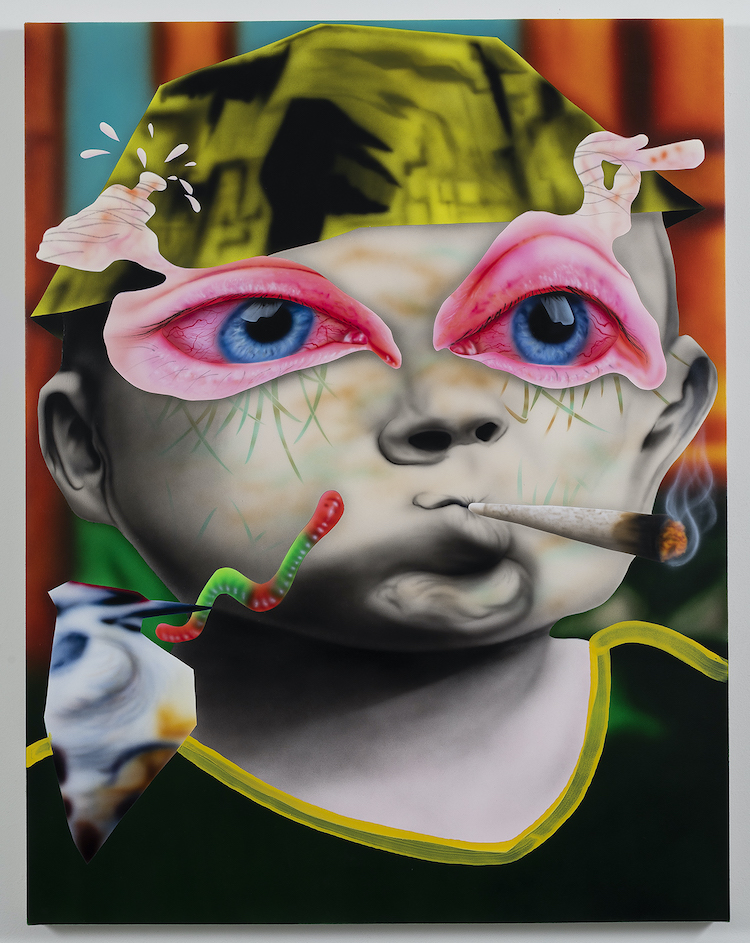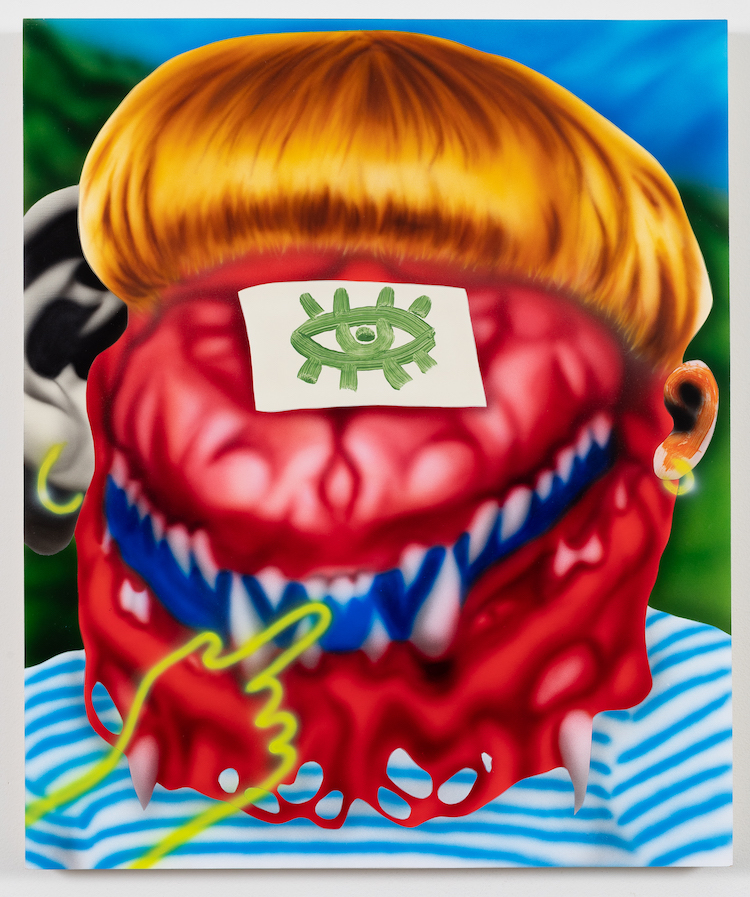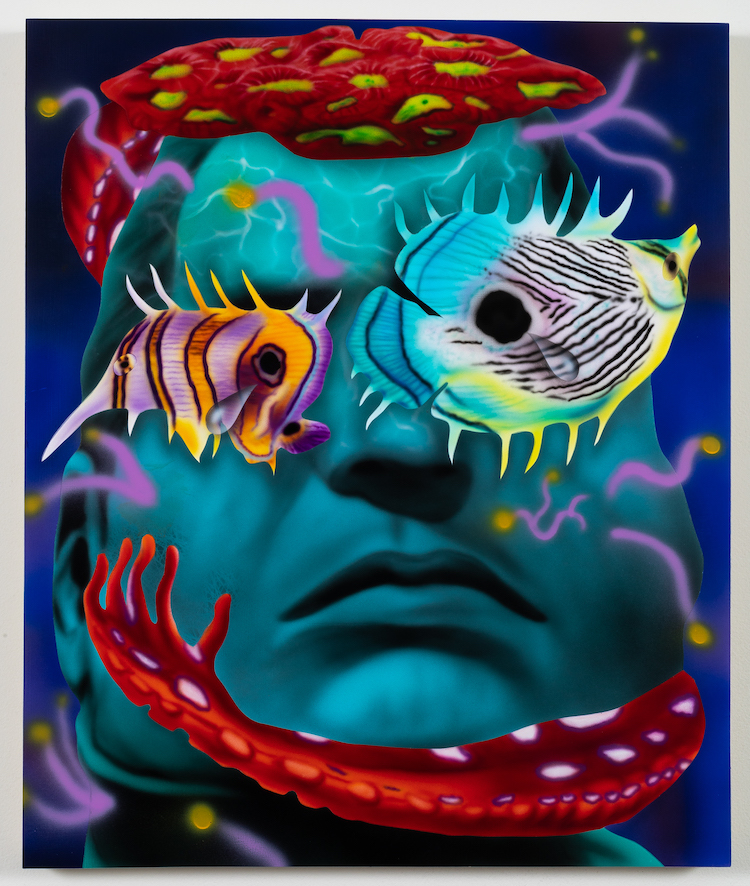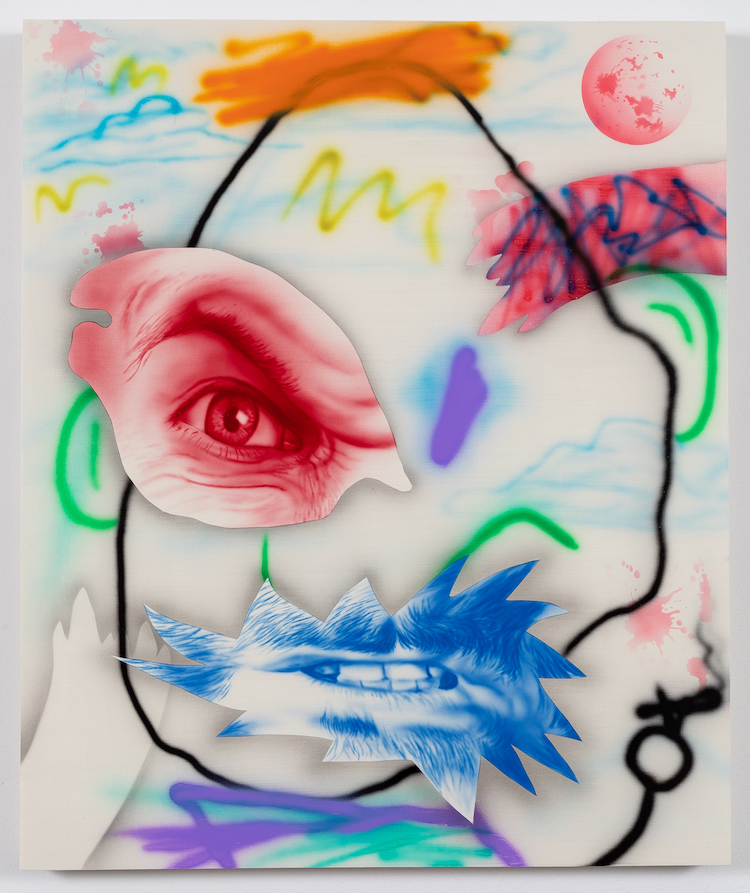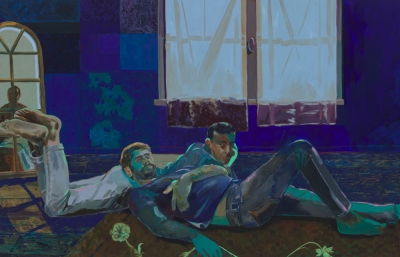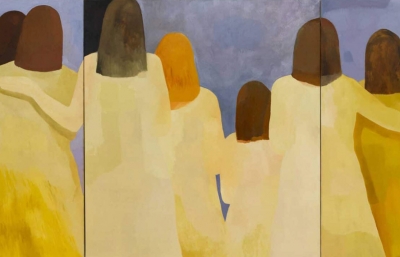For the past couple of years, we've been witnessing the explosion of popularity of airbrush as a painting medium and been enjoying watching the different directions in which the technique is being used. From Austin Lee's blurry renderings of the virtual world, over Oli Epp's stylized depictions of reality, Mario Ayala's surrealistic explorations of LA culture, or Aaron Elvis Jupin's alternate actualities, we've been trying to keep up with the variety of styles and aesthetics influenced and informed by the spraying of paint on the surface.
And among the names that we've been coming across lately and thoroughly enjoying is Chris Regner with his patched-up, deconstructed portraits he has been making. After the initial riffs of the classical pieces in which he often placed himself instead of the main protagonist, and a series of works influenced by his love for comic art, recent graduate of RISD’s MFA Painting program has found his focus in portraiture through which he is exploring deeply personal, yet relatable issues. Born in Milwaukee and currently living in Rhode Island, Regner started making work inspired by his personal experiences, and even more, by the experiences he might have missed during his upbringing. Packed in an exciting mash of visuals borrowed from mythologies, popular culture, pure imagination, as well as autobiographical elements, the artist is equally good at utilizing the possibilities of the technique as well as the potential of the imagery he is using.
With a solo show coming up with Kravets Wehby Gallery in NYC and taking part in the inaugural group show at the new venue of Hong Kong's WOAW Gallery, we figured it's the right moment to get in touch with the artist and talk about his work, his practice, and learn just how much one can nerd out about their art tools.
Sasha Bogojev: What triggered or informed your interest in airbrush?
Chris Regner: I majored in drawing in undergrad. Unlike most art schools that pair drawing and painting, my school kept those majors separate. There was a focus on drawing media and little overlap with other mediums. Graphite was my favorite drawing tool, so I spent a lot of time becoming proficient with it. I learned to develop images slowly, overlapping light layers that eventually led to a solid representation. I took painting courses here and there, but I never quite fell in love with applying paint traditionally.
After undergrad, I decided that I wanted to integrate more color into my work. I tried oil and acrylic using brushes but found myself dissatisfied with the process. Living in the Midwest, there are limited venues showcasing the latest in contemporary painting, so I turned to Instagram to fill this need. I was impressed with the seamless gradients and apparent flatness of paint application achieved by artists such as Michael Dotson and Jamian Juliano-Villani, amongst others. Since I was already accustomed to the slickness of graphite drawing, airbrushing seemed like a good way to translate my images into painting.
What are the aspects of that technique that you enjoy?
I love the multiplicity of marks that can be achieved with a singular tool. I can rein it in and use it to execute precision marks such as eyelashes, fur, and carving out sharp edges. Alternatively, I can let loose and blast the acrylic out from a distance allowing for larger, gestural marks from the shoulder. Trusting that everything will coalesce when you hit that certain value range or integrate that perfect transparent color is a thrill that I held onto from my drawing practice.
Do you use other techniques or materials or do you have strict limitations in place in such regard?
I will integrate some acrylic mediums here and there if I’m looking for a particular effect that I can’t easily replicate. Sometimes I use molding paste and work into it with a Dremel tool before airbrushing over it. Other times I put a base of pumice down to give a grainy, muted texture. Anytime I use a medium it’s typically sparse and for a very specific conceptual reason. I’ve always been the type of person that does well with limitations. The airbrush is perfect for this as it’s all about finding clever ways to spray paint on a surface.
What are some of the most challenging aspects of working with airbrushes, and how do you approach those?
The most challenging part is just the maintenance and upkeep of the tool. This is sort of a boring answer, but it’s honest. It requires a lot of attention and can be stubborn if you neglect it. Like a toddler temper tantrum. (Editor's note: make sure you check out Chris' Basic Airbrush Guide). Another challenge, for me at least, is finding ways to upend the viewer’s expectations of what an airbrushed painting will look like.
Yeah, that seems like a tricky one. What are your personal experiences in that regard and how do you go around it?
There’s a certain vernacular that has been developed around this tool in a “fine art” context that requires self-awareness. “What do I have to offer?” “How can I use unconventional tools alongside the airbrush in order to create new or novel effects? ” and “Do I lean into these expectations or push back?” are questions that I’m always considering. There are times when embracing this visual language makes sense and times when it requires some subversion.
Despite its recent popularity, I still think the airbrush has a ways to go before it’s respected in the same way as oil painting. I’ve gotten a bit of pushback about it from teachers and peers alike. There’s something I find freeing about this, however, as it feels like I can forge my own path and dip in and out of “lowbrow” (I hate that description) and “highbrow” art. It fits into both worlds, which offers a lot of potential to the artist.
So, how do you feel about its increase in popularity and somewhat of an explosion of airbrush art?
I started airbrushing right around when it started to become popular. As I stated before, for me, it began as a way to transition out of drawing into painting in a way that I felt excited about, so I didn’t really consider the implications of the trend. Like anything in the art world the bubble could pop, and it could look passé at some point, but I don’t worry myself with things like that. I’ve stayed true to my vision and honest with what and how I like to paint.
On a more positive note, I am very excited to see more people picking up the airbrush. There are so many fantastic artists out there finding incredible ways to use it. As an augmentation to a more traditional approach or fully leaning into the language of airbrushing, I love it all. I’m also excited to see artists integrating lowrider and hot rod “lowbrow” styles into a fine arts context. I hope the momentum continues, and it becomes more normalized.
Is there a main idea around which you built your work for your upcoming solo show or lately in general?
My work for the past year has focused on my struggles with masculinity in the context of lacking a good role model, and where one might look for that influence in media, games, or in outdated tropes. This foundation has allowed for a lot of off-shoot approaches and pieces. I began integrating animalistic patterns and bodily parts which transformed into a new series of work. I’ve been contemplating the idea of nature vs. nurture and whether one is fated or doomed to repeat the sins of their father. The figures in my work are trying their hardest to overcome their predispositions but tend to fall short in one way or another. Embracing my own failures and putting them on display is imperative to the paintings. Instead of creating caricatures made for quick judgment, I prefer to incite complicated reads in the viewer. The work runs the gamut from strongly autobiographical to hypothetical concerns that run through my mind.
That is such a sincere and serious topic for such playful visuals. What are some of the references you've used for this series of portrays?
I’ve found myself integrating animal references into a new series. This started off influenced by the myth behind the founder of Rome, Romulus, and his brother Remus. In this tale, Romulus and Remus are cast out into the Tiber River by King Amulius after their (apparent) divine conception. They survive and are nursed back to health by a she-wolf and woodpecker until they are adopted. They eventually killed Amulius and founded Rome, but Romulus decided to kill his own brother. Ideas of usurpation, family rivalry, and nature vs nurture are encapsulated perfectly in this story. Despite being raised apart from their paranoid, destructive father, Romulus and Remus repeat the patterns of violence true to their family history. The woodpecker motif, a mothering figure for Romulus and Remus, works its way into other paintings in the series. I connect this nurturing presence with the coddling figures that narcissists surround themselves with. Despite the guardian’s best intentions and doting affections, they do not save the men from their own tragedies.
But there are other ways of using this wildlife type of imagery in your work, right?
I also impart animalistic defense mechanisms onto my figures. For example, moths with patterned wings that mimic more dangerous animals, poison frogs that release toxins upon harm, and bowerbirds that construct showy installations as a mating ritual. These are techniques to give creatures an upper hand in their respective worlds. This ties into reflections of myself as an individual and an artist. What do I do for attention? How do I reconcile being sensitive with exuding strength?
Other references are dependent on the entire context of the painting, but I tend to integrate fake gore from video games in a lot of my work. I have an interest in simulated experiences. I think the airbrush, which lacks any true physical contact with the surface, is perfectly suited for depicting things we experience at a distance.
What is the story about the repetitive titles such as Father Figure or That's My Boy?
My Father Figure series of paintings began last year when I was contemplating my upbringing and how I ended up as a person because of this. I began to construct flimsy figures made out of disparate references painted on top of a generic silhouette of a man. The different symbols represent masculine tropes, armor and weaponry, toys, and gore. I thought about where I looked for information on how to be a “man” when the direct source I had for this was absent. The Father Figures are patriarchs that are typically being put together or accompanied by children or animals.
In the That’s My Boy series of work I inhabit an opposite perspective. These are paintings that are self-humiliating and reflections on how I view my own failures as a man. I depict these individuals as making desperate and elaborate attempts for attention, giving into vices like weed, and melting from the pressures of the world.
What type of work are you busy with currently and do you have any shows planned for the future?
I'm currently showing work at WOAW Gallery in Hong Kong for the group show Stay Tuned… and also have a solo show coming up in May at Kravets Wehby Gallery in NYC.
At the moment I'm focused on continuing down the path that this series has taken me in the studio. There’s a lot to expand on, whether that takes the form of more portraits or beginning to integrate full figures again. I might have a residency lined up for next year, but can’t really announce anything yet.
I would like to put this out there though: I really would love to do an album cover at some point. It’s been a dream of mine since high school and I think with the right match it could be fantastic. Just saying!

